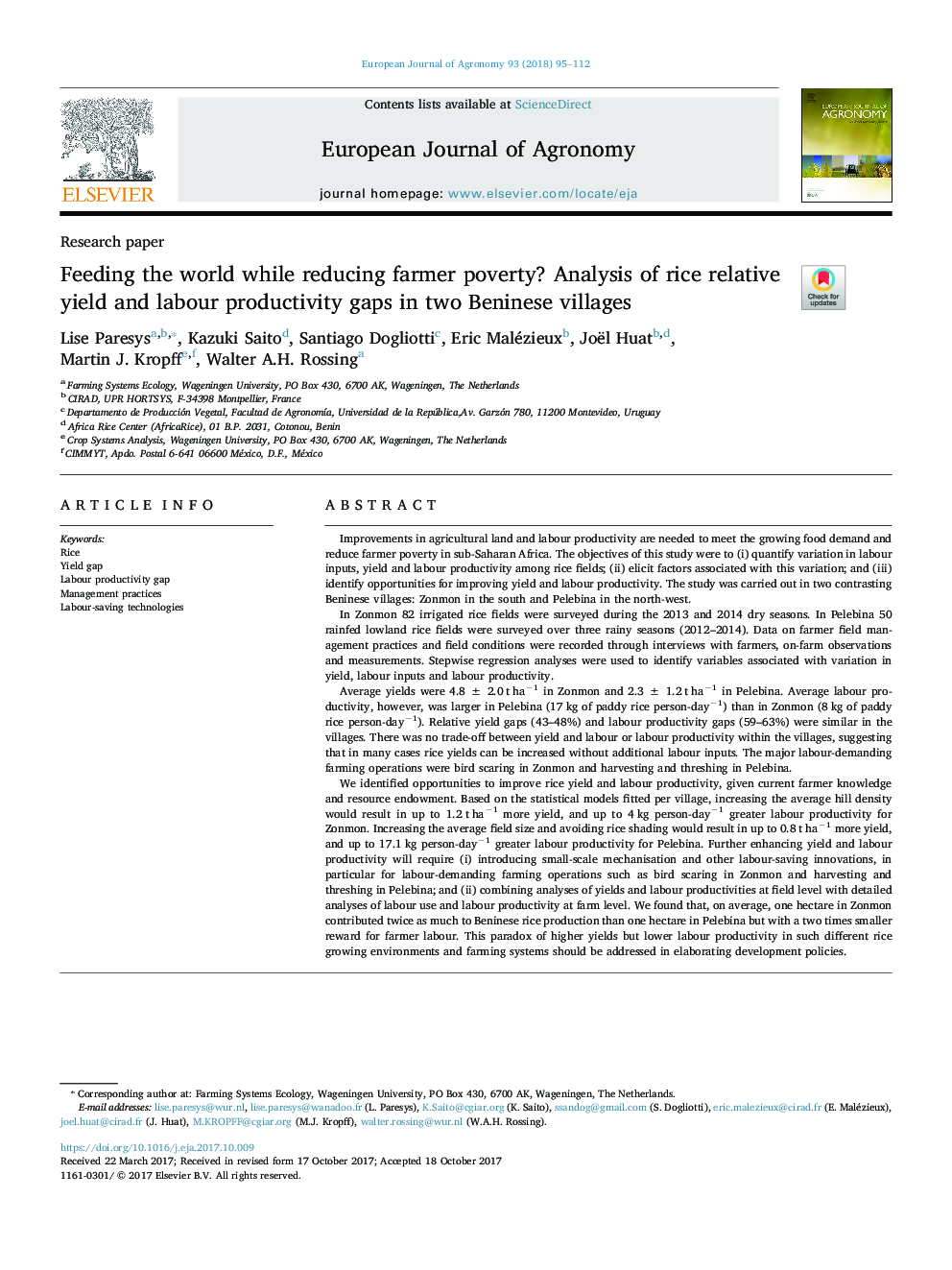| Article ID | Journal | Published Year | Pages | File Type |
|---|---|---|---|---|
| 8878996 | European Journal of Agronomy | 2018 | 18 Pages |
Abstract
We identified opportunities to improve rice yield and labour productivity, given current farmer knowledge and resource endowment. Based on the statistical models fitted per village, increasing the average hill density would result in up to 1.2 t haâ1 more yield, and up to 4 kg person-dayâ1 greater labour productivity for Zonmon. Increasing the average field size and avoiding rice shading would result in up to 0.8 t haâ1 more yield, and up to 17.1 kg person-dayâ1 greater labour productivity for Pelebina. Further enhancing yield and labour productivity will require (i) introducing small-scale mechanisation and other labour-saving innovations, in particular for labour-demanding farming operations such as bird scaring in Zonmon and harvesting and threshing in Pelebina; and (ii) combining analyses of yields and labour productivities at field level with detailed analyses of labour use and labour productivity at farm level. We found that, on average, one hectare in Zonmon contributed twice as much to Beninese rice production than one hectare in Pelebina but with a two times smaller reward for farmer labour. This paradox of higher yields but lower labour productivity in such different rice growing environments and farming systems should be addressed in elaborating development policies.
Keywords
Related Topics
Life Sciences
Agricultural and Biological Sciences
Agronomy and Crop Science
Authors
Lise Paresys, Kazuki Saito, Santiago Dogliotti, Eric Malézieux, Joël Huat, Martin J. Kropff, Walter A.H. Rossing,
